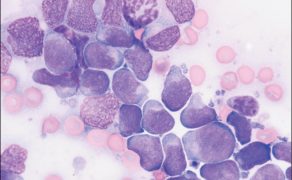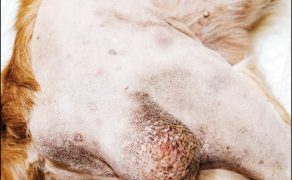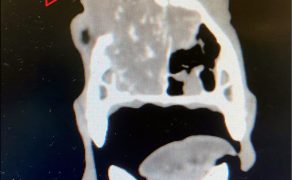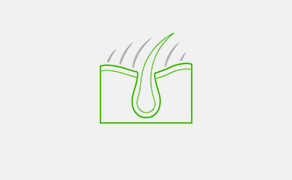Pięć najczęstszych złośliwych nowotworów psów w praktyce weterynaryjnej
Piśmiennictwo
- Molten J.E., Harvey J.W.: Tumors of lymphoid and hematopoietic tissue. [In:] Moulton J.E. (ed.): Tumors in Domestic Animals. 3rd ed. Berkeley, CA, University of California Press, 1990.
- Valli V.E., San Myint M., Barthel A. et al.: Classification of canine malignant lymphomas according to the World Health Organization criteria. „Vet Pathol”, 2011, 48 (1), 198-211.
- Withrow S.J., Vail D.M. (eds.): Withrow and McEwen’s Small Animal Clinical Oncology. 4th ed. Philadelphia, PA, Saunders-Elsevier, 2007.
- Modiano J.F., Breen M., Burnett R.C. et al.: Distinct B-cell and T-cell lymphoproliferative disease prevalence among dog breeds indicates heritable risk. „Cancer Res”, 2005, 65 (13), 5654-5661.
- Hoar S.K., Blair A., Holmes F.F. et al.: Agricultural herbicide use and risk of lymphoma and soft tissue sarcoma. „JAVMA”, 1986, 256 (9), 1141-1147.
- Weir E.C., Norrdin R.W., Matus R.E. et al.: Humoral hypercalcemia of malignancy in canine lymphosarcoma. „Endocrinology”, 1988, 122 (2), 602-608.
- Jagielski D., Lechowski R., Hoffmann-Jagielska M., Winiarczyk S.: Retrospective study of the incidence and prognostic factors of multicentric lymphoma in dogs (1998-2000). „J Vet Med A Physiol Pathol Clin Med”, 2002, 49 (8), 419-424.
- Mauldin G.E., Fox P.R., Patnaik A.K., Bond B.R., Mooney S.C., Matus R.E.: Doxorubicin-induced cardiotoxicosis. Clinical features in 32 dogs. „JVIM”, 1992, 6 (2), 82-88.
- MacEwen E.G., Brown N.O., Patnaik A.K., Passe S.: Cyclic combination chemotherapy of canine lymphosarcoma. „JAVMA”, 1981, 178 (11), 1178-1181.
- Vail D.M., Pinkerton M.E., Young K.M.: Hematopoietic tumors, canine lymphoma and lymphoid leukemia. [In:] Small Animal Clinical Oncology. 5th ed. St. Louis, MO, Elsevier Saunders, 2013, 608-638.
- Williams L.E.: Lymphoma, dog (multicentric). [In:] Côté E. (ed.): Clinical Veterinary Advisor: Dogs and Cats. 2nd ed. St. Louis, MO, Elsevier Mosby, 2011, 675-678.
- White C.R., Hohenhaus A.E., Kelsey J., Procter-Gray E.: Cutaneous MCTs: associations with spay/neuter status, breed, body size, and phylogenetic cluster. „J Am Anim Hosp Assoc”, 2011, 47 (3), 210-216.
- Thamm D.H., Vail D.M.: Mast cell tumors. [In:] Withrow S.J., Vail D.M., Page R.L. (eds.): Withrow and MacEwen’s Small Animal Clinical Oncology. 5th ed. St. Louis, MO, Elsevier Saunders, 2013, 335-349.
- Webster D.J., Yuzbasiyan-Gurkan V., Thamm S.H., Hamilton E., Kiupel M.: Evaluation of prognostic markers for anine mast cell tumors treated with vinblastine and prednisone. „BMC Veterinary Reasearch”, 4, Artcile Number: 32 (2008).
- Kiupel M., Webster J.D., Miller R.A., Kaneene J.B.: Impact of tumour depth, tumour location and multiple synchronous masses on the prognosis of canine cutaneous mast cell tumours. J „Vet Med A Physiol Pathol Clin Med”, 2005, 52 (6), 280-286.
- Seguin B., Leibman N.F., Bregazzi V.S., Ogilvie G.K., Powers B.E,. Dernell W.S., Fettman M.J., Withrow S.J.: Clinical outcome of dogs with grade-II mast cell tumors treated with surgery alone: 55 cases (1996-1999). „J Am Vet Med Assoc”, 2001, 218 (7), 1120-1123. 10.2460/javma.2001.218.1120.
- Thamm D.H., Mauldin E.A., Vail D.M.: Prednisone and vinblastine chemotherapy for canine mast cell tumor − 41 cases (1992-1997). „J Vet Intern Med”, 1999, 13 (5), 491-497. 10.1892/0891-6640(1999)013<0491:PAVCFC>2.3.CO;2.
- Boudrieau R.J., McCarthy R.J., Sisson R.D.: Sarcoma of the proximal portion of the tibia in a dog 5.5 years after tibial plateau leveling osteotomy. „JAVMA”, 2005, 227 (10), 1613-1617.
- Sartor A.J., Ryan S.D., Sellmeyer T., Withrow S.J., Selmic L.E.: Bi-institutional retrospective cohort study evaluating the incidence of osteosarcoma following tibial plateau levelling osteotomy (2000-2009). „Vet Comp Orthop Traumatol”, 2014, 27 (5), 339-345.
- Arthur E.G., Arthur G.L., Keeler M.R., Bryan J.N.: Risk of osteosarcoma in dogs after open fracture fixation. „Vet Surg”, 2016, 45 (1), 30-35.
- Ru G., Terracini B., Glickman L.T.: Host related risk factors for canine osteosarcoma. „Vet J”, 156 (1), 31-39, 1998.
- Cooley D.M., Beranek B.C., Schlittler D.L. et al.: Endogenous gonadal hormone exposure and bone sarcoma risk. „Cancer Epidemiol Biomarkers Prev”, 11 (11), 1434-1440, 2002.
- Wykes P.M., Withrow S.J., Powers B.E.: Closed biopsy for diagnosis of long bone tumors: Accuracy and results. „JAAHA”, 21, 489-494, 1985.
- Simon M.S.: Biopsy of musculoskeletal tumors. „J Bone Joint Surg Am”, 64, 1254-1257, 1982.
- Schick A.R., Hayes G.M., Singh A. et al.: Development and validation of a hemangiosarcoma likelihood prediction model in dogs presenting with spontaneous hemoabdomen: the HeLP score. „J Vet Emerg Crit Care (San Antonio)”, 2019, 29 (3), 239-245.
- Matsuyama A., Poirier V.J., Mantovani F., Foster R.A., Mutsaers A.J.: Adjuvant doxorubicin with or without metronomic cyclophosphamide for canine splenic hemangiosarcoma. „J Am Anim Hosp Assoc”, 2017, 53 (6), 304-312.
- Fosmire S.P., Dickerson E.B., Scott A.M. et al.: Canine malignant hemangiosarcoma as a model of primitive angiogenic endothelium. „Lab Invest”, 2004, 84 (5), 562-572.
- Clifford C.A., Mackin A.J., Henry C.J.: Treatment of canine hemangiosarcoma: 2000 and beyond. „J Vet Intern Med”, 2000, 14 (5), 479-485.
- Brown N.O., Patnaik A.K., MacEwen E.G.: Canine hemangiosarcoma: retrospective analysis of 104 cases. „J Am Vet Med Assoc”, 1985, 186 (1), 56-58.
- Day M.J., Lucke V.M., Pearson H.: A review of pathological diagnoses made from 87 canine splenic biopsies. „J Small Anim Pract”, 1995, 36 (10), 426-433.
- Wendelburg K.M., Price L.L., Burgess K.E., Lyons J.A., Lew F.H., Berg J.: Survival time of dogs with splenic hemangiosarcoma treated by splenectomy with or without adjuvant chemotherapy: 208 cases (2001-2012). „J Am Vet Med Assoc”, 2015, 247 (4), 393-403.
- Wiley J.L., Rook K.A., Clifford C.A., Gregor T.P., Sorenmo K.U.: Efficacy of doxorubicin-based chemotherapy for non-resectable canine subcutaneous haemangiosarcoma. „Vet Comp Oncol”, 2010, 8 (3), 221-233.
- Weisse C., Soares N., Beal M.W., Steffey M.A., Drobatz K.J., Henry C.J.: Survival times in dogs with right atrial hemangiosarcoma treated by means of surgical resection with or without adjuvant chemotherapy: 23 cases (1986-2000). „J Am Vet Med Assoc”, 2005, 226 (4), 575-579.
- Withrow S.J., Vail D.M.: Diagnostic imaging in oncology: Withrow & MacEwen’s Small Animal Clinical Oncology. 4th ed. St. Louis, Saunders, 2007, 97-111.
- Adams W., Kleiter M., Thrall D. et al.: Prognostic significance of tumor histology and computed tomographic staging for radiation treatment response of canine nasal tumors. „Vet Radiol Ultrasound”, 50, 330-335, 2009.
- MacEwen E.G., Withrow S.J., Patnaik A.K. Nasal tumors in the dog: retrospective evaluation of diagnosis, prognosis, and treatment. „J Am Vet Med Assoc”, 1977, 170, 45-48.
- Malinowski C.: Canine and feline nasal neoplasia. „Clin Tech Small Anim Pract”, 2006, 21, 89-94.
- Knapp D.W., Richardson R.C., Bonney P.L. et al.: Cisplatin therapy in 41 dogs with malignant tumors. „J Vet Intern Med”, 1988, 2, 41-46.
dr n. wet. Ewa Kautz
Katedra Chorób Dużych Zwierząt z Kliniką
Wydział Medycyny Weterynaryjnej
SGGW w Warszawie
Nowoursynowska 100 02-787 Warszawa
Galeria
Mogą zainteresować Cię również
Znajdź swoją kategorię
2843 praktycznych artykułów - 324 ekspertów - 23 kategorii tematycznych
Weterynaria w Terenie

Mykotoksyny – ukryty wróg w hodowli bydła mlecznego
Koszty Walka z mykotoksynami w stadzie bydła mlecznego jest nie tylko kwestią zdrowia zwierząt, ale także istotnym aspektem ekonomicznym. Analizy kosztów i korzyści pokazują, że inwestycja w kontrolę mykotoksyn może być wysoce opłacalna. Straty wynikające z obecności mykotoksyn, takie jak spadek produkcji mleka, zwiększone koszty weterynaryjne i przedwczesne brakowanie krów, mogą znacząco przewyższać koszty prewencji. […]

Kulawizna u bydła mlecznego (choroba Mortellaro). Skuteczne zwalczanie zapalenia skóry palca dzięki naturalnemu rozwiązaniu
Biodevas Laboratoires opracowała PIETIX – rozwiązanie w 100% naturalne, mające na celu zwalczenie zapalenia skóry palca u bydła mlecznego.

Czynniki wpływające na kolonizację mikrobiomu i dojrzałość układu pokarmowego prosiąt oraz jego prawidłowe funkcjonowanie
Piśmiennictwo dr inż. Piotr Nowak Facebook0Tweet0LinkedIn0

Opieka stomatologiczna nad starszymi końmi
Piśmiennictwo lek. wet. Katarzyna FerenzGabinet weterynaryjny Końskie Zdrowie we Wrocławiu Facebook0Tweet0LinkedIn0
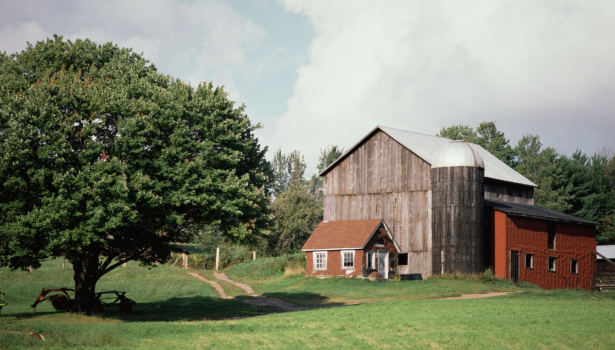
Praktyka w terenie – jak zabezpieczyć się na wypadek stanów zagrożenia życia lub zdrowia zwierzęcia
Piśmiennictwo mec. Anna SłowińskaVox Poland Pomoc PrawnaSzczecin Facebook0Tweet0LinkedIn0

Wiek ma ogromne znaczenie podczas stawiania diagnozy
Lek. wet. Justyna Domagała tytuł inżyniera zootechniki uzyskała w 2016 r., a tytuł lekarza weterynarii – w 2019 r. na Uniwersytecie Przyrodniczym we Wrocławiu. Po studiach swoją wiedzę poszerzała podczas stażu w Szpitalu dla Koni Equivet, w którym później uzyskała zatrudnienie. W latach 2021-2024 swoją pracę skupiała na internistycznym leczeniu koni oraz pogłębianiu wiedzy na […]
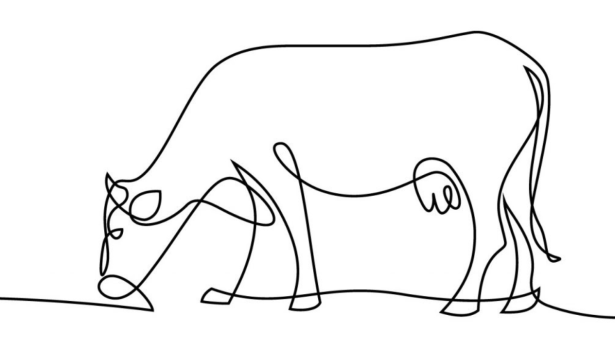
Echa 32. Kongresu Bujatrycznego w Cancun
Profilaktyka Kongres był również okazją do zaprezentowania kilku przełomowych produktów immunologicznych, które mają szansę wprowadzić na nowe tory prewencję znanych od lat jednostek chorobowych, sprawiających wiele kłopotów z punktu widzenia odchowu cieląt czy rozrodu. Mowa tu konkretnie o trzech nowych szczepionkach mających zastosowanie w profilaktyce Mycoplasma bovis, Cryptosporidium parvum czy wirusowej biegunki bydła (BVD). Nie […]



